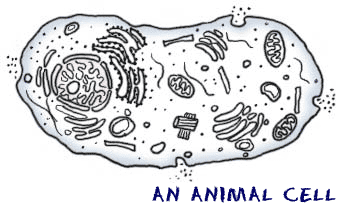 Just the fact that life has to concern itself about reproduction means that life is a terminal condition, and -- that a life form is meant to colonize and occupy a niche in the fabric of life, and -- one could interpret reproduction as a method that life uses to adapt to a changing environment.
Just the fact that life has to concern itself about reproduction means that life is a terminal condition, and -- that a life form is meant to colonize and occupy a niche in the fabric of life, and -- one could interpret reproduction as a method that life uses to adapt to a changing environment.Lifespan periods today may be reflective of an Earth that has a continually changing environment. Nothing is ever as static as they seem. We have found evidence of ancient oceans on the highest mountains and old tropical forest in the frozen tundra. Through all of the environmental changes, life has remained tenacious in its habitation on Earth because the DNA that describes a life form is programmable. The ability of life to make changes and adapt to differing environmental situations has been a staple of Darwin's theory since its inception. But it is important to note that the changes come through the reproductive system. Once reproduced, the properties of that individual remain with that life form throughout its life. If you have big feet, you will have big feet throughout your life. But that doesn't mean that you automatically pass this trait on to your offspring.
DNA changes to a given environmental change usually do not happen in one life cycle of an organism. It may take several life cycles to complete the necessary changes to suit a particular environment. If the lifespan is too long, then the necessary changes may not occur to save the life form. This works well because the changing environment may be temporary in nature and full adaptation not actually required.
Rapid environmental changes can be too fast for an organism to adapt and in the process, dooming the affected organism. External forces such as cosmic collisions, volcanism, and changes in the Sun's output would bring about those rapid changes.
Evidence to support a slowing of the evolutionary process can be found by looking at the records of Earth's past. During the Precambrian/Cambrian period, there was a virtual explosion of life forms developed. But the Earth was in a state of rapid change and in order for life to stay viable, rapid changes to DNA was necessary to adapt to a changing world. In order to produce the changes fast enough, shorter life spans would have been necessary. The passing years have calmed the Earth's dynamism and mellowed out its widely varying environmental changes. These longer periods of stability have reduced the need for organism change due to environmental concerns. Translocation and predatory practices probably drive the slight changes in life forms we observe today.
Overall, the increase in stability means less demand for DNA changes and consequently, longer life spans become possible.
The larger question is how is it determined that a DNA change is needed. We know that certain pesticides trigger changes in how a life form deals with those chemicals. Is it the DNA making those determinations? You will notice that the change is always the appropriate response to the circumstance. The response isn't a guess, and after the change occurs, natural selection favors those organisms that made the necessary change. The rearrangement of the chemistry in a mosquito to make it immune to a certain pesticide is a remarkable feat, and to be able to pass the change to subsequent generations suggest more than just chance.
I would suggest that there is in every organism, whether simple or complex, a will to adjust to whatever ill that comes its way. Is this ability the workings of intelligence within the organism or just blind luck? If it is luck, then life has been very lucky to survive from its beginning so long ago. Yes, DNA and its attending retinues that maintain it are a marvel. It is as if there is a command post within our body that recognizes that it is getting warmer or colder and makes those necessary adjustments, or that there is a new chemical that needs to be dealt with.
Natural selection does the work after the changes are made but not before.
Cheers,
-Robert-
No comments:
Post a Comment
Please Include First Name and Town. -Thanks-